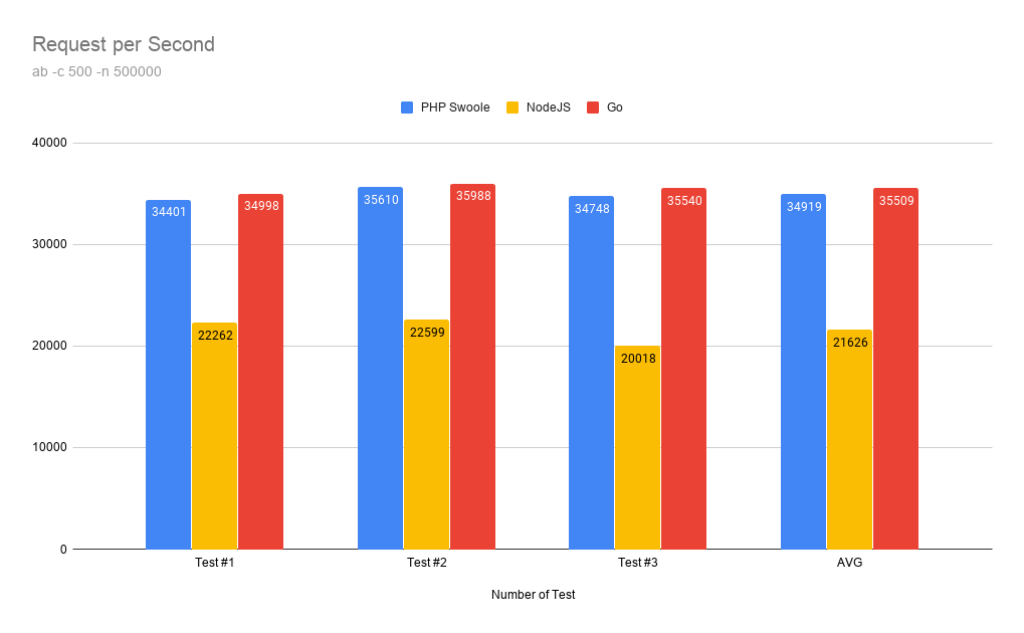PHP has long been a dominant server-side scripting language, powering many of the world’s websites and web applications. However, as web applications become more complex and the demand for higher performance increases, traditional PHP execution models have shown limitations. Enter RoadRunner, a high-performance PHP application server that promises to bring a new level of speed and efficiency to PHP applications.
RAGGE, a leading tech solutions company, utilizes optimized and best-in-class technologies, with RoadRunner being a prime example of such advancements. In this article, we will explore what RoadRunner is, how it works, its benefits, and how to get started with it in your PHP projects.
What is RoadRunner?
RoadRunner is an open-source, high-performance PHP application server, load balancer, and process manager written in Go.
Unlike traditional PHP servers that rely on the CGI or FPM (FastCGI Process Manager) to handle requests, RoadRunner takes a different approach by running PHP scripts continuously in a persistent worker process.
This design reduces the overhead associated with starting and stopping PHP processes for each request, resulting in significant performance improvements.
Key Features:
- Performance: RoadRunner can handle a large number of requests per second with low latency due to its persistent worker model.
- Scalability: It supports horizontal scaling, making it easy to distribute load across multiple servers.
- Flexibility: RoadRunner is highly configurable and can be integrated with various PHP frameworks like Laravel, Symfony, and Zend.
- Simplicity: Written in Go, RoadRunner is easy to install and deploy, with minimal dependencies.
- Extensibility: RoadRunner’s architecture allows for easy addition of custom plugins to extend its functionality.

How RoadRunner Works
Traditional PHP servers like Apache or Nginx with PHP-FPM operate by spawning a new process for each request. This model involves significant overhead due to process creation and destruction, leading to higher response times and resource consumption. In contrast, RoadRunner utilizes a long-running process approach.
Persistent Worker Processes
RoadRunner starts a pool of PHP worker processes that remain running and ready to handle incoming requests. When a request arrives, it is passed to an available worker process, which processes the request and sends back the response. The worker process then waits for the next request instead of terminating. This persistent nature of worker processes eliminates the overhead associated with process creation, leading to faster response times.

Go-Powered Server
The core of RoadRunner is written in Go, a language known for its performance and concurrency capabilities. The Go server handles incoming HTTP requests and dispatches them to the appropriate PHP workers. This separation of the web server (Go) and the application logic (PHP) allows each to be optimized independently, resulting in a highly efficient system.
Benefits of Using RoadRunner
Enhanced Performance
One of the most significant advantages of using RoadRunner is its performance boost. By eliminating the need to start and stop PHP processes repeatedly, RoadRunner significantly reduces the latency of request handling. This improvement is particularly noticeable in high-traffic applications where response times are critical.
Reduced Resource Consumption
With RoadRunner, the persistent worker processes use resources more efficiently. Memory and CPU usage are optimized because the overhead of process management is minimized. This efficiency allows you to serve more requests with fewer resources, reducing operational costs.
Improved Developer Experience
RoadRunner simplifies the development and deployment process. Its configuration is straightforward, and it integrates seamlessly with popular PHP frameworks. Additionally, developers can leverage RoadRunner’s hot reload feature, allowing them to see real-time changes without restarting the server. This feature accelerates the development cycle and enhances productivity.
Scalability and Flexibility
RoadRunner’s architecture supports horizontal scaling, making it easy to distribute the load across multiple servers. This scalability ensures that your application can handle increased traffic without compromising performance. Furthermore, RoadRunner’s flexibility allows you to customize its behavior through plugins, enabling you to tailor the server to your specific needs.

Getting Started with RoadRunner
Installation
To get started with RoadRunner, you need to install it on your server. RoadRunner is distributed as a single binary file, making the installation process simple. You can download the latest version from the official RoadRunner GitHub repository.
# Download the RoadRunner binary
wget https://github.com/roadrunner-server/roadrunner/releases/download/v2.6.1/roadrunner-2.6.1-linux-amd64.tar.gz
# Extract the binary
tar -xzf roadrunner-2.6.1-linux-amd64.tar.gz
# Move the binary to a directory in your PATH
sudo mv roadrunner /usr/local/bin/
Configuration
RoadRunner uses a configuration file (.rr.yaml) to define its behavior. This file specifies settings such as the number of worker processes, the PHP executable path, and the application root directory. Here is an example configuration file:
server:
command: "php worker.php"
http:
address: "0.0.0.0:8080"
workers:
command: "php worker.php"
pool:
num_workers: 4
max_jobs: 1000
allocate_timeout: 60s
destroy_timeout: 60s
static:
dir: "public"
RoadRunner Integration with PHP Applications
To integrate RoadRunner with your PHP application, you need to create a worker script (worker.php) that listens for incoming requests and processes them. Here is a simple example using the PSR-7 HTTP message standard:
use Nyholm\Psr7\Factory\Psr17Factory;
use Spiral\RoadRunner\PSR7Client;
use Spiral\RoadRunner\Worker;
require 'vendor/autoload.php';
$worker = Worker::create();
$psrFactory = new Psr17Factory();
$psr7 = new PSR7Client($worker, $psrFactory, $psrFactory, $psrFactory);
while ($req = $psr7->acceptRequest()) {
$response = new \Nyholm\Psr7\Response();
$response->getBody()->write("Hello, RoadRunner!");
$psr7->respond($response);
}This script uses the RoadRunner PSR-7 bridge to handle incoming HTTP requests and send responses. You can customize this script to fit your application’s needs.
Running RoadRunner PHP application server
With the configuration file and worker script in place, you can start RoadRunner using the following command:
rr serve -c .rr.yamlRoadRunner will start the server and spawn the specified number of worker processes to handle incoming requests.

Conclusion
RoadRunner PHP application server offers a modern and efficient way to serve PHP applications, overcoming the performance limitations of traditional PHP execution models. Its persistent worker process model, combined with the power of Go, delivers significant performance improvements, reduced resource consumption, and enhanced scalability. By integrating RoadRunner into your PHP projects, you can achieve faster response times and more efficient application infrastructure. Whether you’re building a high-traffic website or a complex web application, RoadRunner is a tool worth considering to take your PHP applications to the next level.





